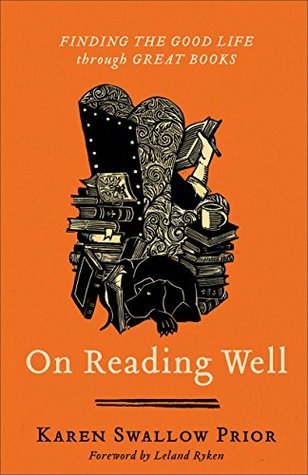More on this book
Community
Kindle Notes & Highlights
Read between
February 9 - April 26, 2020
In nearly three decades of teaching literature, I’ve noticed that many readers have been conditioned to jump so quickly to interpretation and evaluation that they often skip the fundamental but essential task of comprehending what the words actually mean. This habit of the mind can be seen in the body. When I ask students to describe or restate a line or passage, often their first response is to turn their eyes upward in search of a thought or an idea, rather than to look down at the words on the page in front of them where the answer actually lies. Attending to the words on the page requires
...more
Speed-reading is not only inferior to deep reading but may bring more harm than benefits: one critic cautions that reading fast is simply a “way of fooling yourself into thinking you’re learning something.”
Read with a pen, pencil, or highlighter in hand, marking in the book or taking notes on paper.8
In An Experiment in Criticism, C. S. Lewis argues that to approach a literary work “with nothing but a desire for self-improvement” is to use it rather than to receive it.11
To use art or literature rather than receive it “merely facilitates, brightens, relieves or palliates our life, and does not add to it.”12
Just as water, over a long period of time, reshapes the land through which it runs, so too we are formed by the habit of reading good books well.
The virtue—or excellence—of literature cannot be understood apart from its form. To read literature virtuously requires attention to that form, whether the form be that of a poem, a novel, a short story, or a play. To attend to the form of a work is by its very nature an aesthetic experience. The content of a literary work is what it says; its form is how it is said. Unfortunately, we are conditioned today to focus on content at the expense of form.
Aristotle’s emphasis on plot also bears fruitful insights into character. This is because plot, according to Paul Taylor in his essay “Sympathy and Insight in Aristotle’s Poetics,” “centers on the fact that the individual actions of characters follow with probability or necessity from a combination of three factors: the characters’ humanity, their individual personalities, and their involvement in the circumstances depicted in the plot.”14
This is the difference, as Taylor explains, between learning propositional truth through reading history or an argumentative essay and gaining knowledge aesthetically through the process of reading a fictional narrative.15
writer George Saunders, “A story means by how it proceeds.”16 The aesthetic experience of literature—its formative quality—differs from its intellectual or informative qualities.
Similarly, we can hardly attain human excellence if we don’t have an understanding of human purpose. Human excellence occurs only when we glorify God, which is our true purpose. Absent ultimate purpose, we look for practical outcomes.
Although very different, both satirical and allegorical language employ two levels of meaning: the literal meaning and the intended meaning. In satire, the intended meaning is the opposite of the stated words; in allegory, the intended meaning is symbolized by the stated words. Satire points to error, and allegory points to truth, but both require the reader to discern meaning beyond the surface level. In this way, allegory and satire—and less obviously, all literary language—reflect the transcendent nature of the human condition and the “double-willed self” described by Paul in Romans 7:19.28
And the word “in” differs meaningfully from other possible word choices such as “with” or “by.”
“Only desire speaks,” writes Jacques Ellul in The Humiliation of the Word. “Satisfaction is silence.”34 Thus it is the nature of literature to express—and cultivate—desire. Marcel Proust says that “it is one of the great and wonderful characteristics of good books . . . to provide us with desires.”35
Reading well entails discerning which visions of life are false and which are good and true—as well as recognizing how deeply rooted these visions are in language. Mark Edmundson explains in Why Read?, “Such visions are easier to derive from words, from writings, in part because for most of us the prevailing medium, moment to moment, is verbal.”37
The cardinal virtues, the subject of part 1, constitute the most agreed-upon grouping across Greek and early Christian thought. These virtues are prudence, temperance, justice, and courage. They are called cardinal virtues because cardinal originally meant “hinge” or “pivot.”


